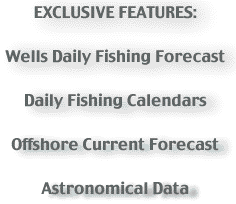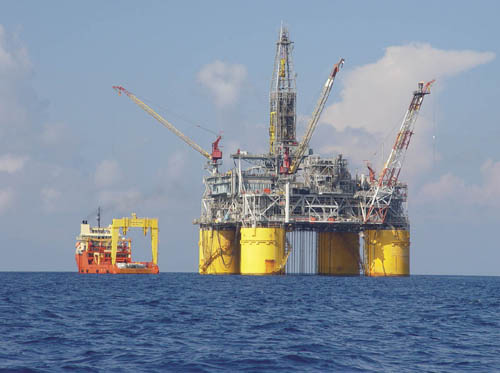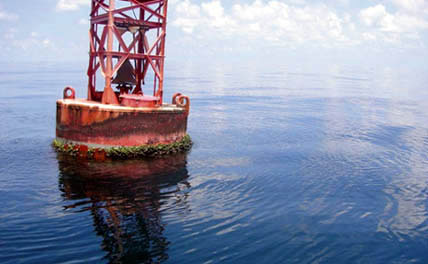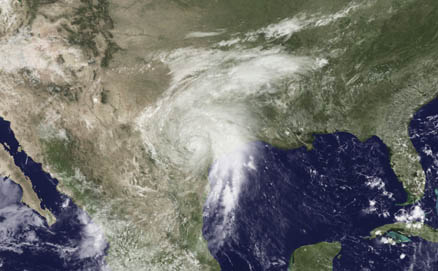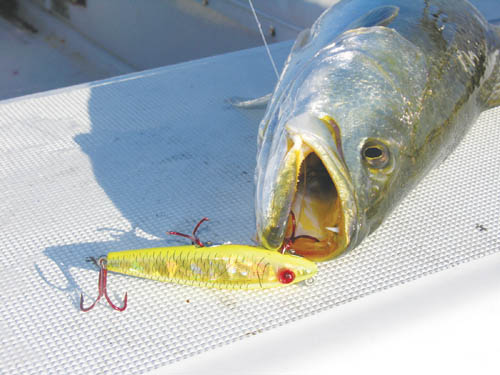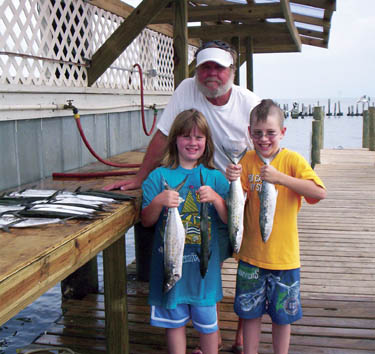
The Saltwater Magazine for Gulf Coast Fishing!
FISHING FORECASTS
| FISHING CALENDARS | ARTICLES | SUBSCRIBE
SUMMER 2011 Preview
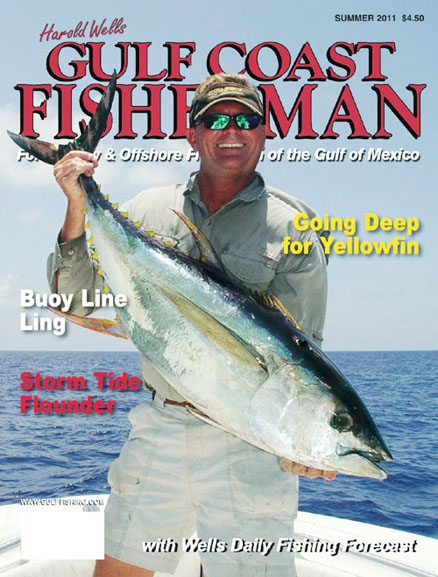
|
Dockside recon made it clear: If you want consistent yellowfin action, run deep. Local charter boats were reporting limit catches around the Mars platform, so off we went to the big yellow floater operating in the Mississippi Canyon area in approximately 3,000 feet. Warm, blue water invigorated by strong Gulf upwellings keeps the massive structure washed with nutrients and microscopic life forms that create the foundation for an entire ecosystem of sea life. MEAN AND NOT-SO-LEAN Ranking below only billfish and huge Gulf sharks, yellowfins are definitely the big shots of the rig. Stocky, muscular ruffians, these fish will test your resolve as well as your tackle. Forget finesse - this is old-school, smash-mouth football and yellowfins play rough. Also worth noting is the tuna's chronic case of A.D.D. Hold their attention
for more than a couple of minutes? Good luck. Unlike nearshore fishing,
where gamefish orientate to wrecks, reefs and ledges, bluewater fishing
can be more of a cat-and-mouse game. Although the briny buffet of various
forage species found beneath a rig's superstructure attracts the yellow
bullies, yellowfins simply won't sit still.
120 Degrees to Ling by Capt. Nate Skinner "Ling - BIG Ling!" This short exclamation from the mouth of Michael Plitt, perched on the bow of my Nautic Star like a blood hound sniffing out the trail of some runaway game, was like an alarm for my adrenal system. It triggered pulsating heart beats that sounded like rapid drumming in my ears, sweaty palms, and a sort of chaotic scramble on deck as we grabbed for live baits and ready-rigged rods in hopes of gaffing the sighted brown monster. When the described scene comes to life, you know we're in the thick of summer here in the Port of Galveston. Connecting the Houston Ship Channel to the Gulf of Mexico, the shipping lanes that lead through the jetties on up to the Galveston Channel are unique compared to those of many other ports along the Texas Coast. They are quite a bit busier, as they lead to the largest shipping center in the state, and they contain quite a few more buoys. This means more structure for fish to hide in and feed from. Storm Tide Flounder by Chester Moore, Jr.
It almost felt criminal. In fact, had we not been vehemently against poaching, my fishing partners and I could have very easily ventured on the wrong side of the law as we caught flounder with every cast. Yes, every cast for over an hour. We caught upwards of 50 and kept just enough to treat our families to flounder stuffed with crabmeat and slathered in butter. The year was 1998 and we were fishing the brackish bayous of southwestern Louisiana as Tropical Storm Frances rolled ashore, producing stiff rain and super high tides. The rain was irrelevant but the tides were over the banks and causing flounder to feed like crazy. The trip was an experiment to see if extra large, incoming tides excited flounder to the point of frenzy, and the results spoke for themselves. Tides are the be-all, end-all of flounder fishing, usurping all other
factors that come into play. And, incoming tides are the best until the
first big cold fronts blast the coast...
everal years ago, Tampa Bay's trout population was devastated by an outbreak of red tide that hit most parts of the bay. From late June through early August the Southshore was white with dead fish mostly catfish, jacks, mullet and trout. Only a few weeks before, I had marveled at the big trout I poled over while looking for bait in front of Cockroach Bay. A month later they were all dead. It could have been worse. There were not as many snook and redfish that
bellied up, and because these fish grow a lot slower than trout, the effects
would have lasted longer, and the recovery been much slower. But trout grow
fast, and now have recovered and then some. Trout have also been a
beneficiary of Florida's inshore net ban of the late 1990's. What could
be better than a fish that's easy to catch, good to eat and grows fast?
One of the oldest towns on the Gulf Coast, Port Isabel was once home to the largest shrimp fleet in Texas. Although the commercial fishery has begun to fade, recreational fishing is on the upswing in this small South Texas town. As the mainland launching point to the Lower Laguna Madre, the same waterfront community that once saw pirates and Civil War soldiers land on its shores now welcomes thousands of light-tackle fishermen in search of speckled trout, redfish, snook and tarpon. Thanks to its sub-tropical climate - it is located just a dozen miles
above the Texas/Mexico border - Port Isabel offers fishermen year around
angling opportunities. Additionally, the warm climate and shallow, clear
waters of the Lower Laguna Madre offer a variety of species and habitat
not found elsewhere in the United States, with the exception of South Florida...
|

